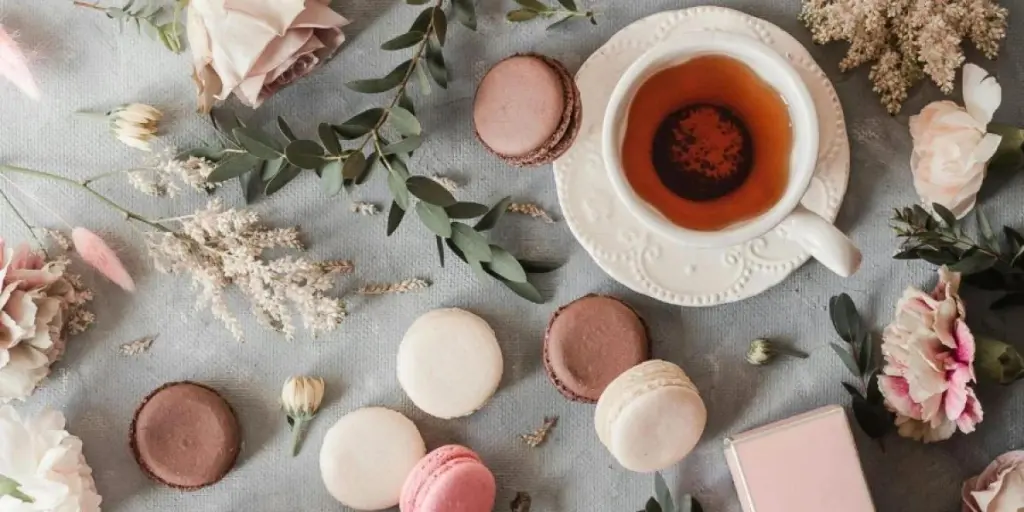Selecting the ideal tea cup and saucer set is more than a matter of utility; it’s an elevation of the tea-drinking experience. In 2024, the art of choosing tea cups and saucers transcends traditional boundaries, blending aesthetics with functionality. As trends evolve and new materials emerge, staying informed is key to enhancing every sip of tea. Whether for personal indulgence or as a retailer catering to discerning clients, understanding the nuances of tea cup and saucer selection is vital. This guide delves into the latest trends, materials, and designs, ensuring your choice of tea cups and saucers resonates with contemporary sophistication and timeless enjoyment.
Table of Contents:
1. Market overview
2. Different types and their features
3. Things to consider when selecting tea cups and saucers
1. Market overview
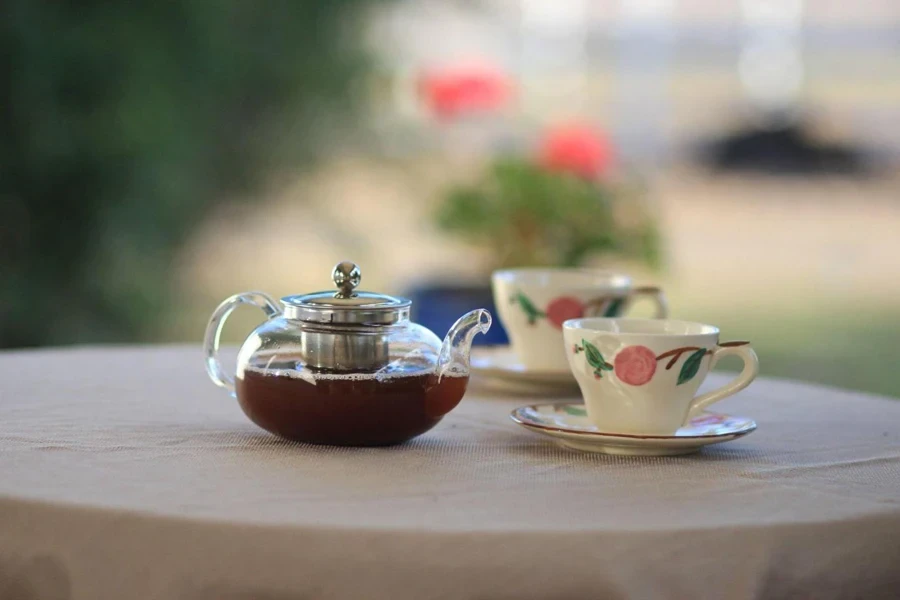
The global market for tea cups and saucers is undergoing a significant transformation. The market in 2024 is marked by diverse consumer needs, innovative designs, and a blend of tradition and modernity, reflecting a global appreciation for the art of tea drinking. With an ever-expanding range of options, both commercial and household sectors are poised to experience significant growth and transformation in the coming years.
The market’s growth trajectory is impressive, with projections indicating a robust Compound Annual Growth Rate (CAGR) through the forecast period of 2023-2030. According to Statista, the global market was valued at approximately 122.2 billion U.S. dollars in 2022. This market is expected to continue its upward trajectory, reaching an estimated value of 160 billion dollars by 2028. This growth is driven by several factors, including evolving consumer preferences, innovations in material and design, and an increasing emphasis on sustainability and aesthetic appeal in home and commercial settings. The market’s expansion is also fueled by the growing popularity of tea culture globally, which has spurred demand for high-quality and artistically crafted tea cups and saucers.
A comprehensive report from Verified Market Reports offers an in-depth analysis of the industry, highlighting its drivers, challenges, opportunities, and major trends. Key players in the market include Lock & Lock, Tupperware, Konitz, Libbey (LBY), Honsun Glassware, IKEA, Shakti Color Craft, and Shandong Awalong Ceramics. The market is segmented by type, including Ceramic, Porcelain, Paper, and Others, and by application, categorized into Commercial and Household sectors.
Regionally, the market analysis covers North America, Europe, Asia, the Middle East, Africa, Latin America the Caribbean, and Oceania, each showing unique growth patterns and preferences. The North American and European markets, for example, are seeing a rising preference for designer and artisanal tea cups and saucers, while Asia-Pacific regions are leaning more towards traditional designs with modern twists.
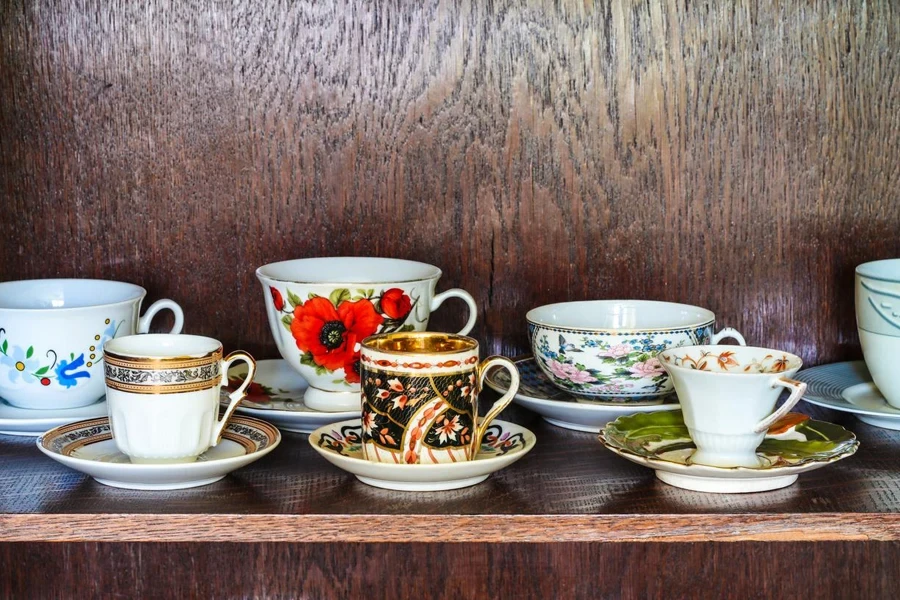
2. Different types and their features
In the realm of tea cups and saucers, the material is not just a matter of aesthetics but also influences the tea-drinking experience. The choice of tea cup and saucer material and design significantly impacts the tea-drinking ritual. From the elegance of bone china to the practicality of porcelain, the modern transparency of glass, and the uniqueness of artisanal styles, each material brings its distinct characteristics to the table.
Bone China, known for its lightweight, delicate, and slightly translucent nature, is a traditional favorite. Its unique composition, which includes bone ash, lends a refined look and excellent heat retention qualities. Tea served in bone china cups is often perceived as more sophisticated, enhancing the overall experience.
Porcelain, another popular choice, offers durability and affordability. It is noted that porcelain, made from kaolin clay, provides a balance between elegance and practicality. It is less costly than bone china and less complex to manufacture, making it accessible while still maintaining a level of translucency and elegance. Porcelain’s ability to highlight the aroma and flavor of the tea makes it a favored choice for those seeking both quality and value.
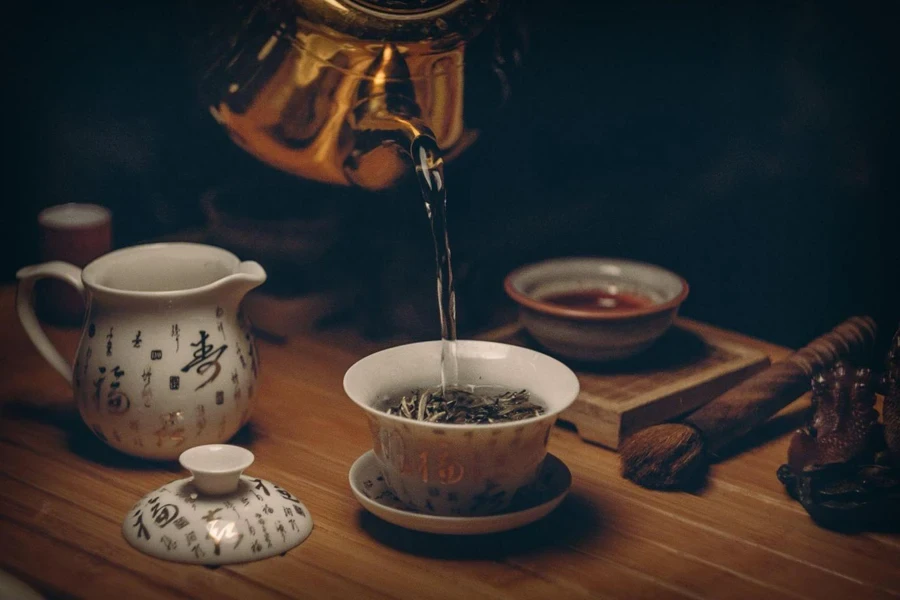
Glass tea cups and saucers, especially those made from borosilicate glass, are gaining popularity. Their high thermal resistance and transparency allow tea drinkers to appreciate the color and clarity of their brew. Glass cups do not retain flavors, making them versatile for different tea types. However, their heat retention may not be as effective as bone china or porcelain, potentially leading to a quicker cooldown of the tea.
Emerging trends in 2024 include a focus on innovative designs that blend traditional elements with modern aesthetics. Artisanal tea cups and saucers, which offer a rustic and unique charm, are becoming increasingly popular. These cups, often made from materials like stoneware or earthenware, provide an earthy and natural tea-drinking experience, appealing to those who appreciate handcrafted and unique items.
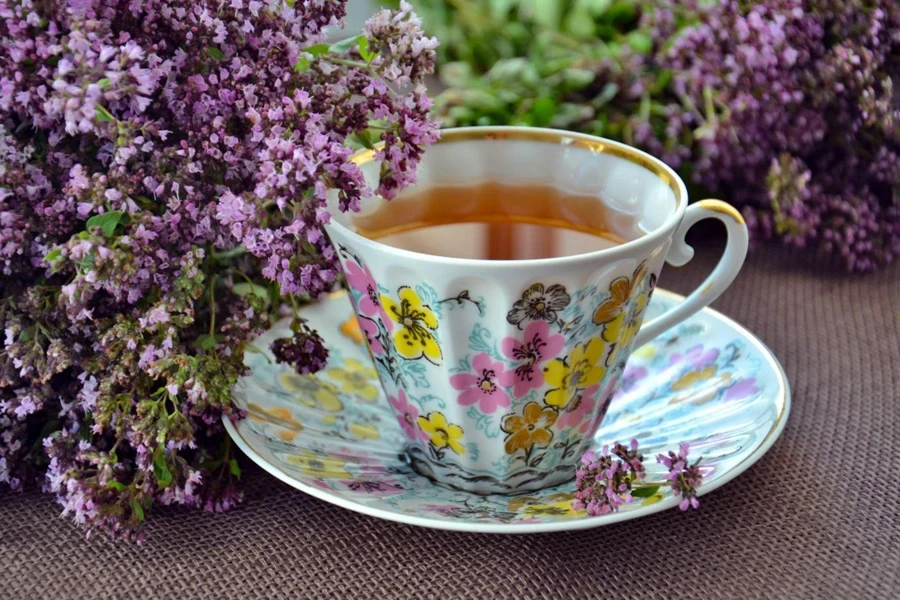
3. Things to consider when selecting tea cups and saucers
Selecting the right tea cups and saucers involves careful consideration of several factors.
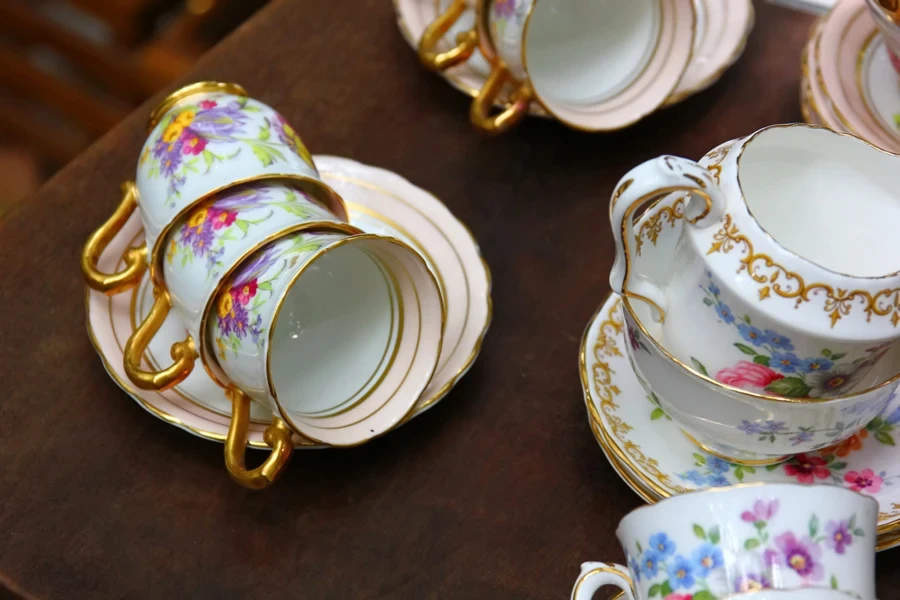
1. Material durability: In selecting the perfect tea cup and saucer, the choice of material plays a crucial role. Each material brings its own set of advantages, influencing the taste, aroma, and overall tea-drinking experience. Material durability is paramount, as the longevity and resilience of the cup depend on it. The decision on the material will depend on personal preferences, the type of tea being served, and the occasion.
Bone China: Bone China is a highly esteemed material for tea cups and saucers, and is known for its exceptional quality and delicate beauty. It is made from a combination of bone ash, clay, and feldspar, fired at high temperatures. This unique composition gives bone china tea cups and saucers their characteristic translucency and lightweight, yet they are surprisingly strong and durable. Bone china cups and saucers are renowned for their smooth, glossy finish, often featuring intricate and elegant designs.
Ceramic: Ceramic tea cups and saucers are a popular choice due to their excellent heat retention and insulation capabilities. Made from white clay fired at temperatures between 700 – 900 degrees Celsius, ceramic cups can maintain the fragrance and warmth of tea for an extended period. High-end ceramic cups and saucers may include a partial glaze and are often meticulously finished.
Porcelain: Porcelain tea cups and saucers are renowned for their elegance and sophistication. Characterized by their translucent, thin, and light design, they offer a comfortable and relaxing tea-drinking experience. The main advantage of porcelain cups and saucers is their ability to retain heat effectively, making them ideal for leisurely sipping.
Glass: Glass tea cups and saucers, second in popularity to ceramic, have a transparent appearance that is ideal for showcasing the color and decorations of tea. While they may not retain heat as well as ceramic or porcelain, glass tea cups and saucers are neutral in taste and easy to clean, making them suitable for a wide range of tea types.
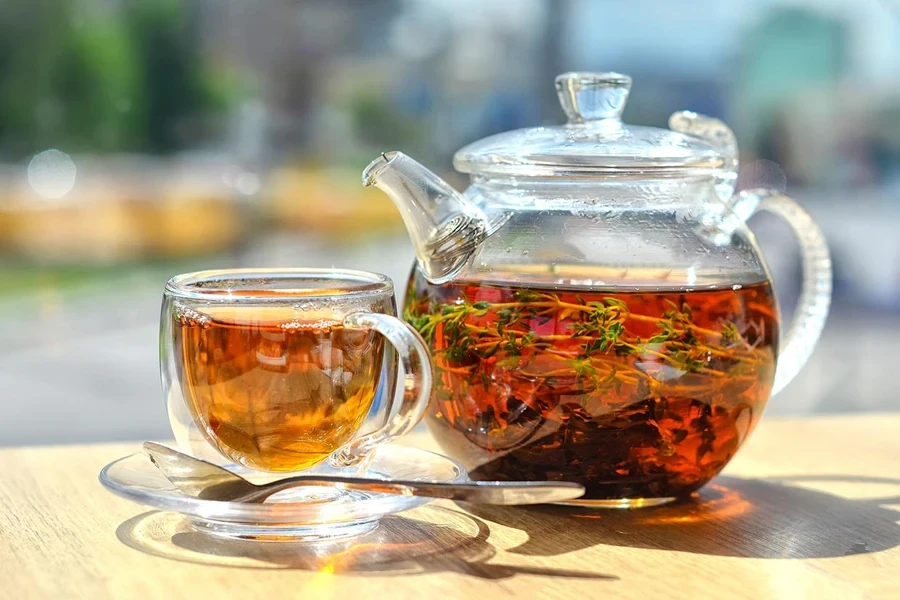
Silver: Silver tea cups and saucers, though less common, are gaining popularity among tea ceremony enthusiasts. Offering a shiny and luxurious appearance, silver cups and saucers provide a unique and noble tea-drinking experience. However, their thermal conductivity can make handling hot tea more challenging.
2. Heat retention: Heat retention is another crucial aspect. Bone china and porcelain are excellent at retaining heat, ensuring that the tea remains warm for a longer duration. This is particularly important for teas that are best enjoyed hot, such as black or herbal teas. In contrast, glass, despite its visual appeal, may not hold heat as effectively, making it more suitable for teas that are consumed relatively quickly or at lower temperatures.
3. Size and ergonomic design: The size and ergonomic design of the tea cup and saucer also play a significant role in the selection process. The choice of size should align with personal preference and the type of tea being served. A smaller cup may be preferable for more robust teas, where the flavor is more concentrated, while larger cups can accommodate lighter teas. Ergonomically, the handle and the rim of the cup are important. A well-designed handle offers comfort and ease of use, preventing any awkwardness or discomfort during tea sessions.
4. Functionality: An aesthetic appeal should harmonize with functionality. While a visually appealing tea cup and saucer can enhance the overall tea-drinking experience, it should not compromise on practical aspects such as ease of cleaning, suitability for different types of tea, and comfort in use. Unique designs and patterns can add a personal touch or complement the decor, but they should align with the cup’s functionality.
5. Occasions: Matching tea cups and saucers with different tea varieties and occasions can elevate the tea-drinking experience. For instance, delicate bone china cups might be reserved for special occasions or to serve fine teas, while sturdier porcelain cups could be used for daily consumption. The choice of tea cup and saucer can also reflect the type of tea being served; for instance, clear glass cups might be ideal for showcasing the color and texture of blooming teas or delicate green teas.
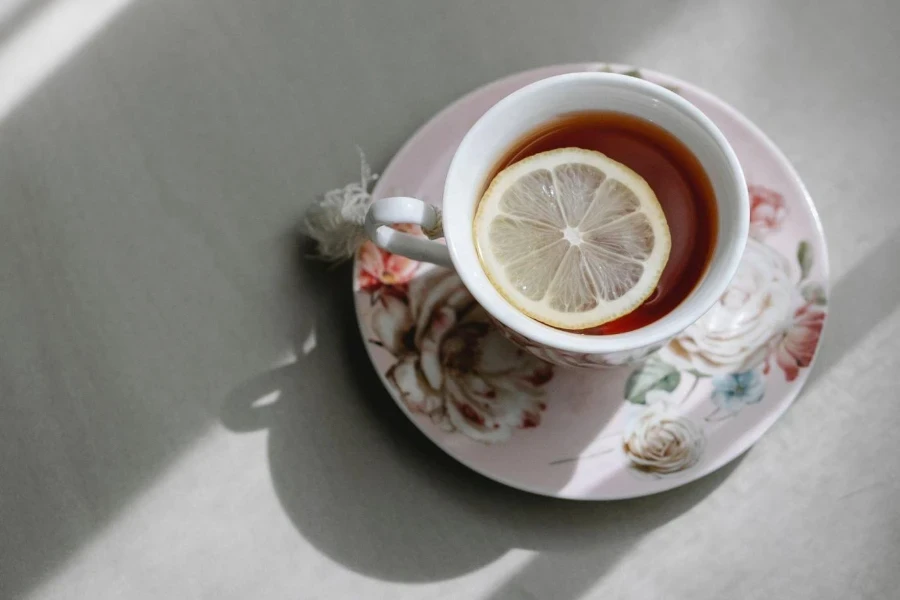
When selecting tea cups, considering specific models or types can greatly aid in making an informed choice. Several noteworthy models stand out for their quality, design, and practicality:
Lenox Federal Gold Bone China Teacup Set: This teacup combines the elegance of traditional bone china with modern practicality. It features a 24K gold rim and a tulip silhouette, offering a blend of Old World charm and contemporary style. With a capacity of 10 ounces, it is larger than a traditional teacup, catering to those who prefer a more generous serving of tea.
Wedgwood Wonderlust Collection: For those looking for luxury and heirloom quality, the Wedgwood bone china teacups are a top choice. The Wonderlust collection, in particular, features whimsical motifs that mix traditional floral patterns with modern flair, and each set comes in a signature Wedgwood blue gift box.
T2 Deco Darling Remix Tea for One Set: This stoneware set with 24K gold handles is ideal for those living in small spaces or as a unique gift. It includes a nesting teapot design, making it compact and convenient for single servings.
Pasabahce Glass Teacup and Saucer Set: For those who prefer a modern aesthetic, this glass set is an excellent choice. It offers a pure way to enjoy tea, as glass does not alter the taste, allowing for the appreciation of the tea in its truest form.
The Tea Spot Japanese Yunomi Teacups: These ceramic teacups, traditionally used for everyday tea drinking in Japan, come in several serene colors. Their vertical design without handles offers an authentic experience.
Arraden Travel Teacup: A practical option for those on the go, this ceramic mug features a removable infuser and a design that fits into car cup holders, making it perfect for commuters.
Conclusion
The art of selecting the right tea cup and saucer is an integral part of the tea-drinking experience, whether for personal indulgence or for retail purposes. It’s about finding that perfect balance between functionality and style, ensuring each cup of tea is not just a beverage but a celebration of tradition, taste, and personal expression. As we move forward, the selections made today in tea cups and saucers will continue to reflect our appreciation for this timeless ritual, enriching daily routines and special moments alike.
